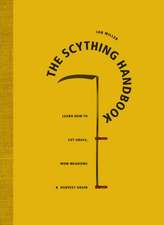A History of Force Feeding: Hunger Strikes, Prisons and Medical Ethics, 1909–1974
Autor Ian Milleren Limba Engleză Paperback – 8 iun 2018
It is the first monograph-length study of the force-feeding of hunger strikers in English, Irish and Northern Irish prisons. It examines ethical debates that arose throughout the twentieth century when governments authorised the force-feeding of imprisoned suffragettes, Irish republicans and convict prisoners. It also explores the fraught role of prison doctors called upon to perform the procedure. Since the Home Office first authorised force-feeding in 1909, a number of questions have been raised about the procedure. Is force-feeding safe? Can it kill? Are doctors who feed prisoners against their will abandoning the medical ethical norms of their profession? And do state bodies use prison doctors to help tackle political dissidence at times of political crisis?
| Toate formatele și edițiile | Preț | Express |
|---|---|---|
| Paperback (1) | 220.13 lei 43-57 zile | |
| Springer – 8 iun 2018 | 220.13 lei 43-57 zile | |
| Hardback (1) | 225.51 lei 43-57 zile | |
| Springer – 25 aug 2016 | 225.51 lei 43-57 zile |
Preț: 220.13 lei
Nou
Puncte Express: 330
Preț estimativ în valută:
42.12€ • 44.10$ • 34.85£
42.12€ • 44.10$ • 34.85£
Carte tipărită la comandă
Livrare economică 07-21 aprilie
Preluare comenzi: 021 569.72.76
Specificații
ISBN-13: 9783319809663
ISBN-10: 3319809660
Pagini: 267
Ilustrații: IX, 267 p. 7 illus., 6 illus. in color.
Dimensiuni: 148 x 210 mm
Greutate: 0.34 kg
Ediția:Softcover reprint of the original 1st ed. 2016
Editura: Springer
Colecția Palgrave Macmillan
Locul publicării:Cham, Switzerland
ISBN-10: 3319809660
Pagini: 267
Ilustrații: IX, 267 p. 7 illus., 6 illus. in color.
Dimensiuni: 148 x 210 mm
Greutate: 0.34 kg
Ediția:Softcover reprint of the original 1st ed. 2016
Editura: Springer
Colecția Palgrave Macmillan
Locul publicării:Cham, Switzerland
Cuprins
1. ‘A Prostitution of the Profession’?: The Ethical Dilemma of Suffragette Force Feeding, 1909-1914. - 2. ‘The Instrument of Death’: Prison Doctors and Medical Ethics in Revolutionary-Period Ireland, c.1917. - 3. ‘A Few Deaths from Hunger is Nothing’: Experiencing Starvation in Irish Prisons, 1917-23. - 4. “I’ve Heard o’ Food Queues, but this is the First Time I’ve ever Heard of a Feeding Queue!”: Hunger Strikers, War and the State, 1914-61. - 5. “I Would Have Gone on with the Hunger Strike, but Force Feeding I could not Take”: The Coercion of Hunger Striking Convict Prisoners, 1913-72. - 6: ‘An Experience Much Worse Than Rape’: The End of Force-Feeding?
Notă biografică
Ian Miller is a Wellcome Trust Research Fellow at the Centre for the History of Medicine in Ireland, Ulster University. He is the author of A Modern History of the Stomach: Gastric Illness, Medicine and British Society, 1800-1950, Reforming Food in Post-Famine Ireland: Medicine, Science and Improvement, 1845-1922 and Water: A Global History (2015).
Textul de pe ultima copertă
This book is the first monograph-length study of the force-feeding of hunger strikers in English, Irish and Northern Irish prisons. It examines ethical debates that arose throughout the twentieth century when governments authorised the force-feeding of imprisoned suffragettes, Irish republicans and convict prisoners. It also explores the fraught role of prison doctors called upon to perform the procedure. Since the Home Office first authorised force-feeding in 1909, a number of questions have been raised about the procedure. Is force-feeding safe? Can it kill? Are doctors who feed prisoners against their will abandoning the medical ethical norms of their profession? And do state bodies use prison doctors to help tackle political dissidence at times of political crisis?
This book is Open Access under a CC BY license.
This book is Open Access under a CC BY license.
Caracteristici
Meticulously researched and intelligently interpreted
Both fascinating and interdisciplinary, it appeals to medical historians, historians of prisons, criminologists, ethicists, moral philosophers, social historians and members of the public
The first in-depth look at a neglected area of social history
Both fascinating and interdisciplinary, it appeals to medical historians, historians of prisons, criminologists, ethicists, moral philosophers, social historians and members of the public
The first in-depth look at a neglected area of social history







